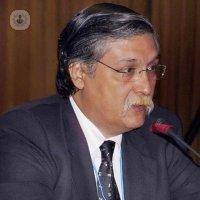Past, present and future. New techniques, latest developments in traumatology
Written by:The human being has known for a long time the possibility of manipulating and immobilizing the fractured limbs, from the outside of the organism. The oldest documented cases correspond to the discovery made in 1903, in the excavations carried out by Professor G. Elliott Smith in the archaeological site of Naga-ed-Der, located north of the city of Luxor and correspond to limb immobilization splints.
In the Corpus Hipocraticum of Hipocrates de Cos (460-377 BC) reference is made to more elaborate systems of external fixation that allowed to immobilize fractures. The current concept of external fixation was coined in the second half of the 19th century, after the appearance of anesthesia and before the discovery of antibiotics. At that time, the military surgeons were the most documented on the subject.
The immobilization of the various fragments of a fracture must be considered as external fixation by inserting nails through the soft parts in each of them and in turn joined the nails together by some external fastening system, plaster, mechanical device, etc. ... The first designs did not invade the bone only supported by the musculotendinous inserts, progressively they were more invasive until the present, in which the elements of skeletal fixation (nails and wires) cross or are screwed to the bone directly.

The concepts of rigidity in the external fixation gave way to concepts biologically closer to the natural healing process of the fractures, neutralizing the harmful forces and modulating the factors favoring the healing process, Professor Juan Lazo Zibikowski (Sevilla) in this sense collaborated between others, in the elaboration of the current concepts of bone repair.
External fixation is essential in the treatment of severe open fractures of the extremities, also as a means of initial immobilization of fractures near the joints whose soft parts can evolve poorly, compromising internal immobilizations with plaques or intramedullary nails, once the correct evolution has been confirmed of these soft parts the external fixation can be changed by an internal one, all this in the so-called "sequential treatment of fractures" , its use is of vital importance also in the initial assistance of the polytrauma, in the "control of damages" fast stabilization skeletal to be able to prioritize on the injuries that compromise the life of the patient, essential in the stabilization of bones affected by bone infections. It is a usual tool to lengthen the extremities.
Currently, for a few years it has been a powerful tool because of its possibility of bone regeneration and reconstruction of the skeletal system, by means of the so-called "osteogenesis to distraction", the technique consists of practicing a fracture surgically and once the process of repair of said fracture, stretching the repair callus progressively (similar to bone lengthening) at a rate of 1 mm per day, this results in the spontaneous creation of a new bone that presents exceptional morphological and physiological characteristics.
The new bone formed, the "regenerated bone" has added values of great value in the therapeutic procedures in which it is used, reconstruction of large traumatic diaphyseal bone defects or due to bone resection techniques of tumor type used in the treatment of bone infections Chronicles, absences of consolidation of fractures or in bone tumors.The regenerated bone and all the bone subjected to the treatment presents a hypervascularization, this is of great value since it increases the defensive mechanisms of the bone before infections and allows a better arrival of the antibiotics.The new reconstructed bone, unlike the reconstructions made by other methods, presents a tubular morphology like that of normal diaphyseal bone, from the biomechanical point of view this form is the lightest and most resistant, it is the best.The method allows the correction of the associated bony deformations, shortening and angular and rotational deformations.
In the bone transport process to obtain the new bone, the soft parts related to the transported fragment also participate, this contributes to the solution of the loss of said soft tissues at the time of the trauma.It is an excellent method of reconstruction, superior to conventional ones, but like the latter, it requires long periods of healing, since 2.4 months of treatment are required for each centimeter reconstructed until the definitive discharge with the problem solved.That is why all efforts currently and in the immediate future will be aimed at reducing healing periods, adding internal stabilization to the bones under treatment or associating new biological products and drugs that accelerate the formation of the treatment. new bone.These methods are currently used in reconstructive surgery of the Locomotor Apparatus , osteogenesis to distraction allows to solve an infinity of osteoarticular pathologies and contributes to solve problems that arise during the medical and surgical treatment of our patients, all through "osseous transport" based on osteogenesis to distraction.
The objective of SEFEx is to disseminate, teach and apply these techniques. The use of our external fixators allows us to practice a grateful osteoarticular reconstruction surgery.


